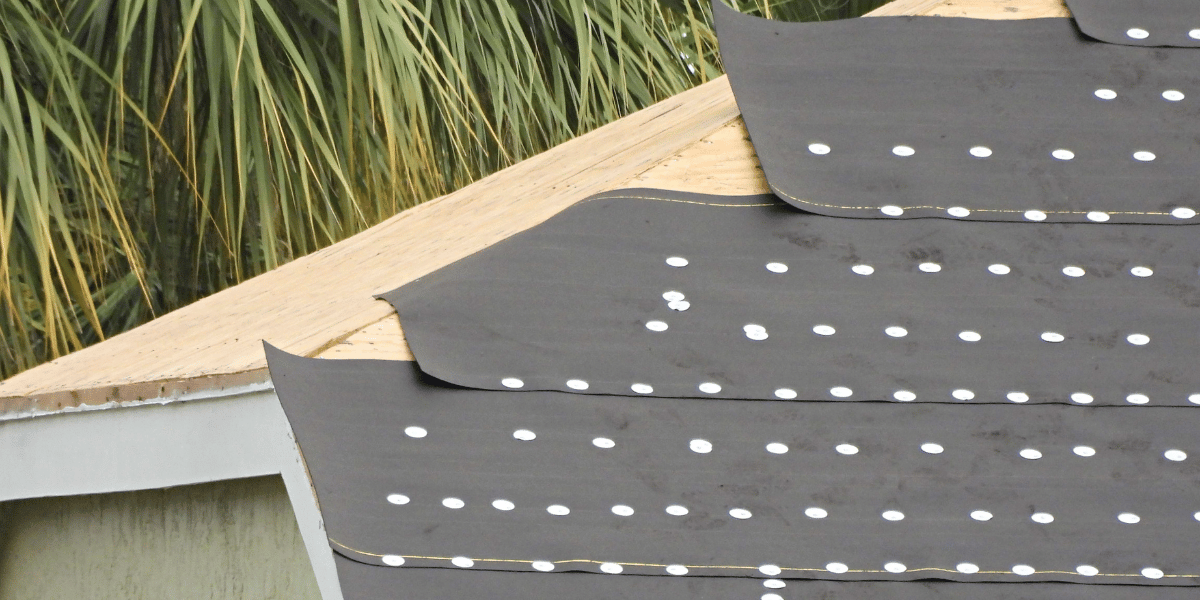When installing a metal roof, you are going to need an underlayment, as with any roof installation. However, the thermal expansion and contraction that is unique to metal roofs will destroy the underlayment commonly used with other types of roofing. As such, metal roofs require their own type of underlayment; in particular: high-temperature peel & stick underlayment.
Here, we are going to look at what you need to know about high-temperature peel & stick underlayment, what makes it a fitting choice for metal roofs, and how easy it is to install to the roof of your choice.
About high-temperature peel & stick underlayment
Underlayment is a thin layer of felt, foam, or other material that is installed beneath the roof material and above the decking. It is installed with the specific purpose of protecting the roof from outside elements, such as wind, leaks, and ice dams, as well as stopping things like resin and chemicals from getting through the roof. It plays a vital role in keeping the interior structure dry and safe and also reinforces the roof. It even has some practical use in dampening things like rain noise on the roof.
High-temperature underlayment is specifically used when fitting a metal roof. Metal roofs tend to attract and retain heat much more than other roofing materials, which can cause them to expand and contrast. They are built to do this with no lasting issues, but if they have been installed with standard felt underlayment, then the underlayment is going to be destroyed by the movement.
High-temperature underlayment is designed to ensure that this does not happen, able to tolerate the heat as well as the the movement of metal roofs. This ensures that metal roofs can enjoy all of the practical benefits, such as the improved safety, reliability, and efficiency of a roof with underlayment.
The benefits of peel and stick
So far, we’ve covered why the “high-temperature” aspect of “high-temperature peel & stick underlayment” can be valuable for metal roofing installations, but why does the “peel and stick” part matter as well?
To put it briefly, peel and stick roof underlayment is a type of underlayment that comes with an adhesive backing to the bottom of it. As the name implies, you simply need to peel the protective film away to unveil the adhesive, and then you can stick it directly to the roof deck.
This easy application comes with a host of elements that can make underlayment installations a lot more convenient. For one, it offers easier installation due to the fact that you won’t need any nails or other fasteners. You simply only need to roll the underlayment across the roof deck, which can make it simple for even a single worker to carry out.
Peel and stick underlayment is effective at ensuring a smooth surface and full contact with the decking, even in windy conditions. As such, it can offer a better moisture barrier than other traditional felt options. The adhesive quality ensures that the underlayment doesn’t wrinkle, avoiding the issues of water pools forming and getting through the roof barrier. Similarly, with no nail holes, you have more comprehensive protection against moisture.
As such, peel and stick is not only more convenient, but it can be more effective. Its ease of installation also makes it safer for roof installations, since workers don’t have to be on the roof spending a long time completing installations.
Know when you need high-temperature peel & stick underlayment
Underlayment manufacturers have to conduct tests to ensure that their products meet the weather and heat resistance needs demanded of them. It’s important to choose a heat-resistant underlayment that meets codes such as the ASTM D1970 that ensures self-adhering bituments meet standards such as adhesion, elongation and tear resistance. These qualities ensure that the underlayment can hold to the roof well while providing the reliability that can see them tolerate the high temperatures and movement caused by the thermal expansion and contraction of metal roofing.
High-temperature peel & stick underlayment can be installed with ease. Typically, you clean the old roofing material away from the decking to ensure as clean and smooth a landing, filling and repairing with the right sealants as necessary. After priming the decking, you typically just need to roll the underlayment out over it and it will adhere on its own, but always be sure to read the application instructions and follow them as exactly as possible.
Hopefully, the information above demonstrates the qualities that can make high-temperature peel & stick underlayment such a vital part of the roof installation process, particularly for metal roofs. Make sure that, regardless of what type of roof you are installing, you’re choosing the type of underlayment that best suits the material you’re working with.

